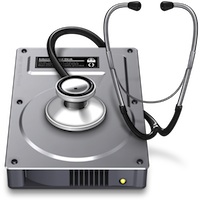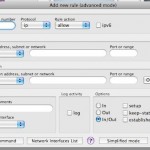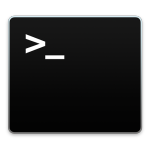Print a random tweet from the command line
By pasting the following small function into your .profile, you’ll be able to print random tweets from any Twitter feed:
By pasting the following small function into your .profile, you’ll be able to print random tweets from any Twitter feed:
If you use the command line frequently, chances are you may have some bad command line habits. IBM’s DeveloperWorks site has posted 10 good UNIX usage habit tips, some of them are just pretty handy tricks in general and if you’re new to the Mac OS X Terminal, you’ll probably learn something since practically all … Read More
Often overlooked, the Terminal can be used to accomplish all sorts of fun stuff. Something that you may find handy, is the ability to Tweet using built in Mac OS X command line utilities like curl. Yes, curl! Now of course this is not a full featured Twitter client by any means, but if you … Read More

If there was one command I would really complain about not being on Mac OS X, it would be “watch”. Watch is one of those great pieces of software that is tiny and completely out of the way, but when needed it will be a life saver. We’re going to show you three different ways … Read More
If you have two directories you need joined together, you can either drag and drop everything together, use the ‘mv’ command to move files manually, or, as we’ll show here, you can quickly merge any two directories within Mac OS X by using the command line tool ditto or ‘cp’. The command line is generally … Read More

In some situations, you may need to repair a Macs disk permissions but be unable to access the Disk Utility app, perhaps due to remote management or because of a problem with something in OS X. Fortunately there’s another method you can use to repair disk permissions in Mac OS X, accessible through the command … Read More

Anytime you are connected to a local area network (LAN) you’ll be assigned an IP address for that network, and often it’s important to know what this IP address is. There are two quick ways to get your LAN IP address in Mac OS X, one is more user friendly using the GUI, and the … Read More

I came across an excellent alternative to the command line ‘ping’ and ‘traceroute’ tools recently. It’s a utility called mtr, which combines the statistics and prints their functionality into a single network diagnostic tool, reporting details on the network connection between your host machine and whatever the destination host is, determining the address of each … Read More

The Mac firewall has long been based on IPFW, a robust and strong software firewall that comes form the unix world. But managing IPFW usually requires digging around in the command line, so as I was recently looking around for a Mac OS X GUI to IPFW, I came across WaterRoof. If you’re looking for … Read More

If you’re troubleshooting a Mac machine with some particularly odd issues that routine measures don’t seem to be resolving, it can be helpful to list what kernel extensions are activated, particularly third party kexts loaded in OS X. Determining what kernel extensions are loaded and running in Mac OS X is rather easy, and using … Read More
You can find out what the manufacturer, model number, and type of LCD panel you have in any of your Macs, including the iMac, MacBook Air, MacBook, or any model MacBook Pro by using a fairly complex looking terminal command. If you’re unfamiliar with the command line, just copy and paste the line below into … Read More

Have you ever tried to run a command line tool to discover that you don’t have the necessary privileges to use it? Or perhaps the command itself actually requires root access to run at all? You’ll typically experience this with a ‘permission denied’ type of error message in terminal. Rather then type out the entire … Read More
Have you ever put your Mac to sleep, only to find it awake seemingly on it’s own when you return to the machine? I’ve run into this mystery of a randomly waking Mac a few times, and with a few terminal commands you can help track down what caused your Mac to wake from sleep. … Read More

Need to access the current Finder directory immediately within the Terminal? While newer Mac OS X versions have an option to enable “New Terminal at Folder” in Services, prior releases do not, so instead you can get cdto, it’s one of those must-have apps for anyone who’s constantly switching between the command line and the … Read More

You can resize, rotate, or flip any image file via the Mac’s Terminal using the powerful command line sips tool. Manipulating images with sips is practically instantaneous, and if you need to quickly resize, rotate, or flip an image file and want to stay within the command line, it can definitely beat firing up a … Read More
If you want to see the difference between two folders on a Mac, or compare two directories contents, you can easily do so with the help of the powerful diff command. This tutorial will show you how to compare two directories, and the contents of those directories, by using the Terminal. This command line approach … Read More
Taking screenshots from the command line is made easy, thanks to a utility included in Mac OS X called screencapture. Here’s how to use it: screencapture test.jpg The screen capture will then appear in the directory that the command was executed. There are more advanced features to the screencapture utility though, here’s a few examples. … Read More

If you’re trying to tweak a wireless router to get the best signal, being able to continuously measure the wi-fi signal strength while you toy with the antennas, placement, and whatever else on the network is really valuable. While most users are best served by using the Mac Wi-Fi Diagnostics app to monitor signal strength … Read More